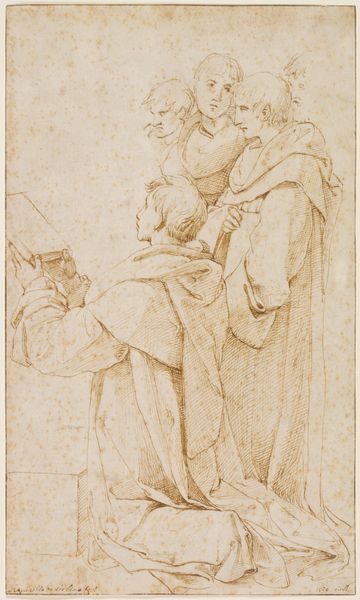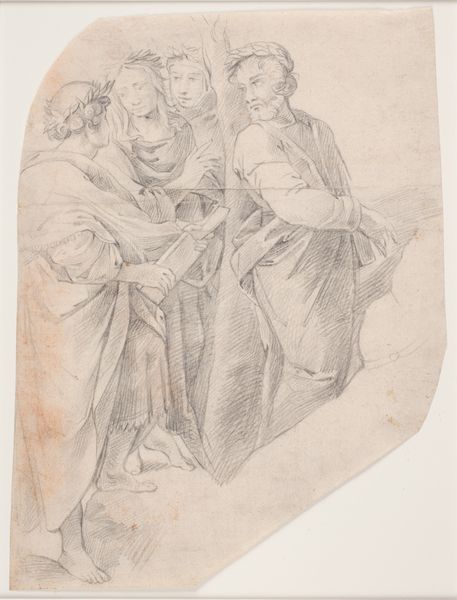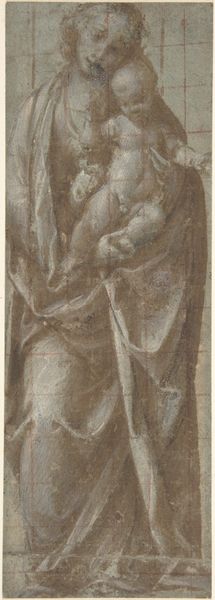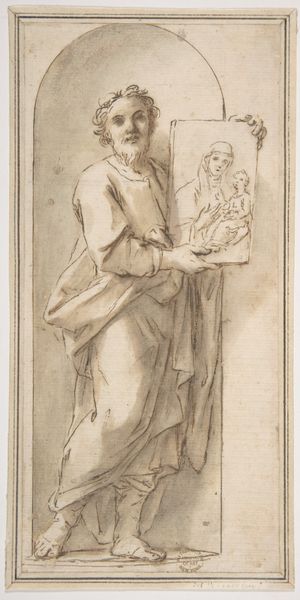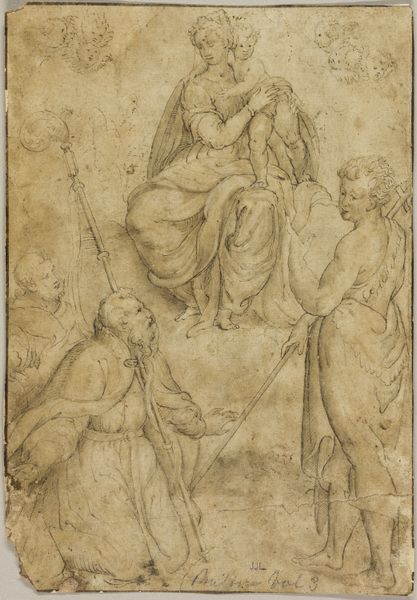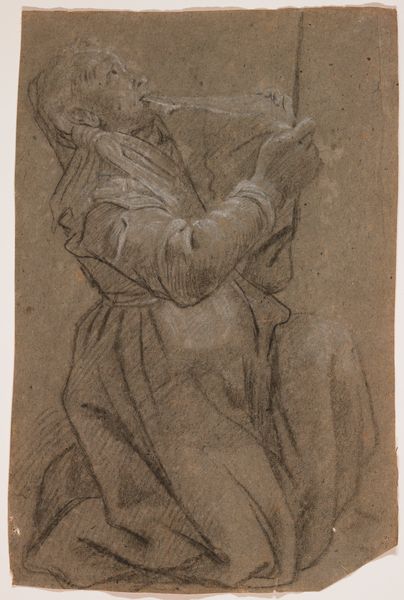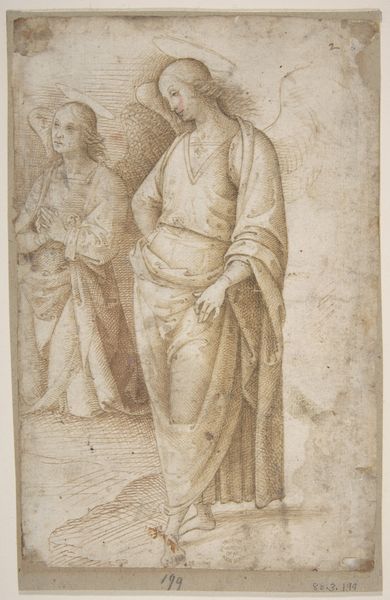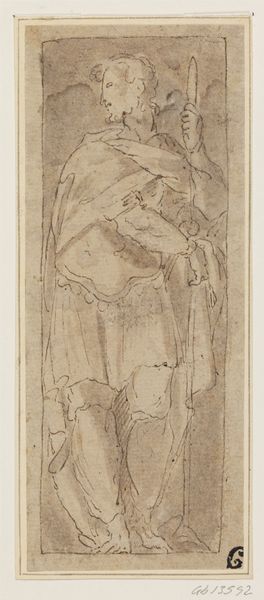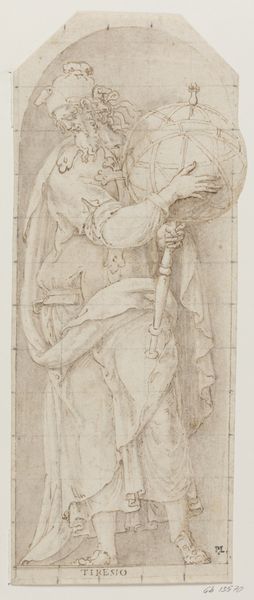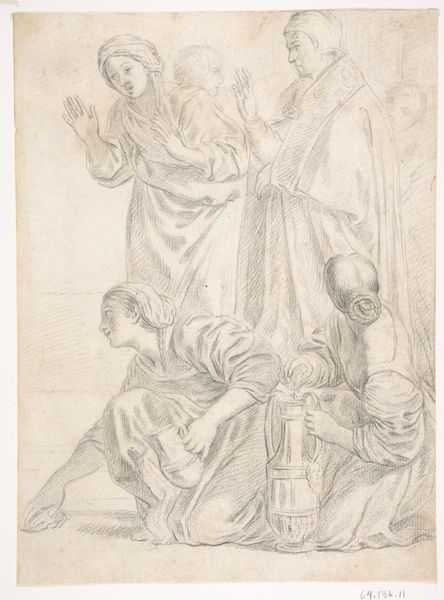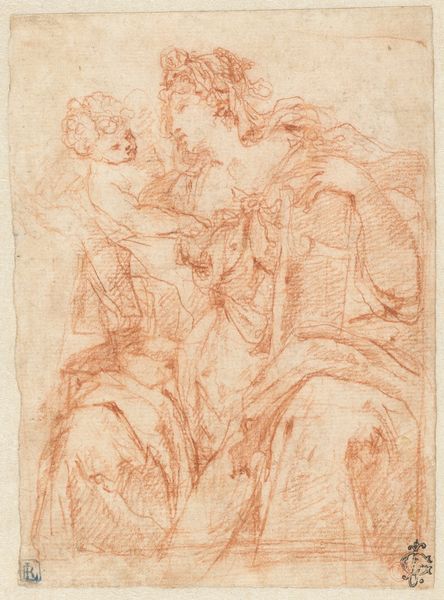
drawing, pencil, chalk, charcoal
#
portrait
#
pencil drawn
#
drawing
#
baroque
#
charcoal drawing
#
figuration
#
pencil drawing
#
pencil
#
chalk
#
14_17th-century
#
charcoal
#
history-painting
Copyright: Public Domain
Curator: Here we have Eustache Le Sueur’s chalk, pencil and charcoal drawing, "Jakob mit seinem Sohn Joseph", created around 1650. Editor: The immediate feeling is one of subdued intensity. The monochromatic palette amplifies the intimate exchange between the two figures. It feels so... tactile, somehow, like I could reach out and feel the weight of that draped fabric. Curator: Indeed. Le Sueur captures a really powerful familial narrative here. We can read this as a moment of intergenerational dialogue and inheritance – Jacob, blessing Joseph and foreshadowing the younger man's future prominence. Consider the patriarchal structure informing this depiction: lineage, legacy, the passing of power within a specific social order. Editor: Absolutely, and those draped garments serve a dual purpose. They offer visual splendor but also become symbolic of inherited responsibilities, layered meaning, and cultural memory, linking them to imagery of classical authority. It reminds me of Roman senatorial attire or even ecclesiastical vestments. It makes one think, too, of ideas of status and representation, as related to Baroque portraiture in general. Curator: Precisely! By referencing classical aesthetics, Le Sueur imbues the biblical scene with increased importance and grandeur, a technique typical of history painting in the Baroque era. He’s elevating the narrative, grounding it within a familiar visual vocabulary understood by his contemporary audience. The muted tones almost neutralize individualizing characteristics, emphasizing instead how both are participating in these culturally encoded roles of father and son. Editor: The expressions, however, maintain an incredible personal quality despite the classicizing context. Jacob's protective embrace carries significant emotional weight, doesn’t it? This act embodies a potent emotional symbolism extending beyond the biblical story itself: the enduring father/son relationship and all it implies: guidance, hope, and protection. Curator: Yes, that is spot on! The human bond endures, even when represented through a lens of historical and artistic convention. Looking at this drawing now, I'm reminded of the importance of art as a means to negotiate the complexities of family dynamics and power structures. Editor: For me, its continued fascination stems from that delicate balance between familiar iconography and human emotional expression, a poignant blend from which new cultural meanings constantly evolve.
Comments
No comments
Be the first to comment and join the conversation on the ultimate creative platform.


